How To Measure Your Floor
Accurate measurements are crucial when purchasing flooring to ensure a professional result. The new flooring should completely cover the relevant surface area, without any visible joins, for the most attractive finish. Unfortunately, not all rooms are symmetrical or have lovely straight walls with no interruptions, such as pillars, bay windows and fireplaces, and calculating how much flooring your need can seem complicated.
Just follow these simple steps to get the key measurements and always use a tape measure and calculator to achieve the most accurate results. You should always purchase 10-15% extra to allow for off cuts and to get the best layout of planks for your space, so remember to add this to the final calculation.
Basic Room Measurements
The area of a room or space is calculated by measuring the length by the width. For example, if a room is 5m long by 4m wide the total area is 20m2
Products are always quoted in m2, so only measure in metres.
For a completely symmetrical room with no deviations from straight walls, this will be the simplest and only measurement you need.
The number of packs will be calculated when you select a product – you can then check to see if this provides enough surplus as well for your project
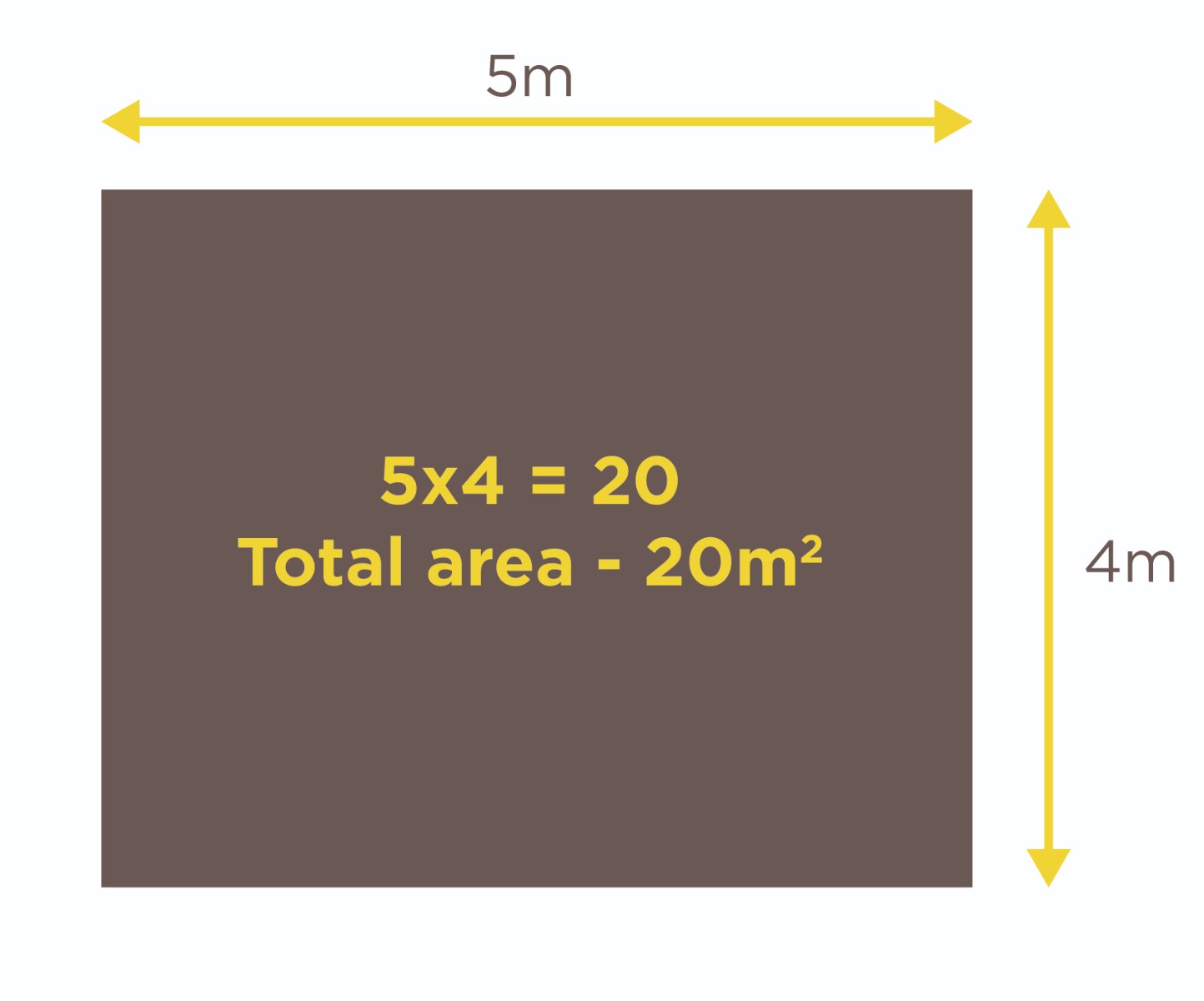
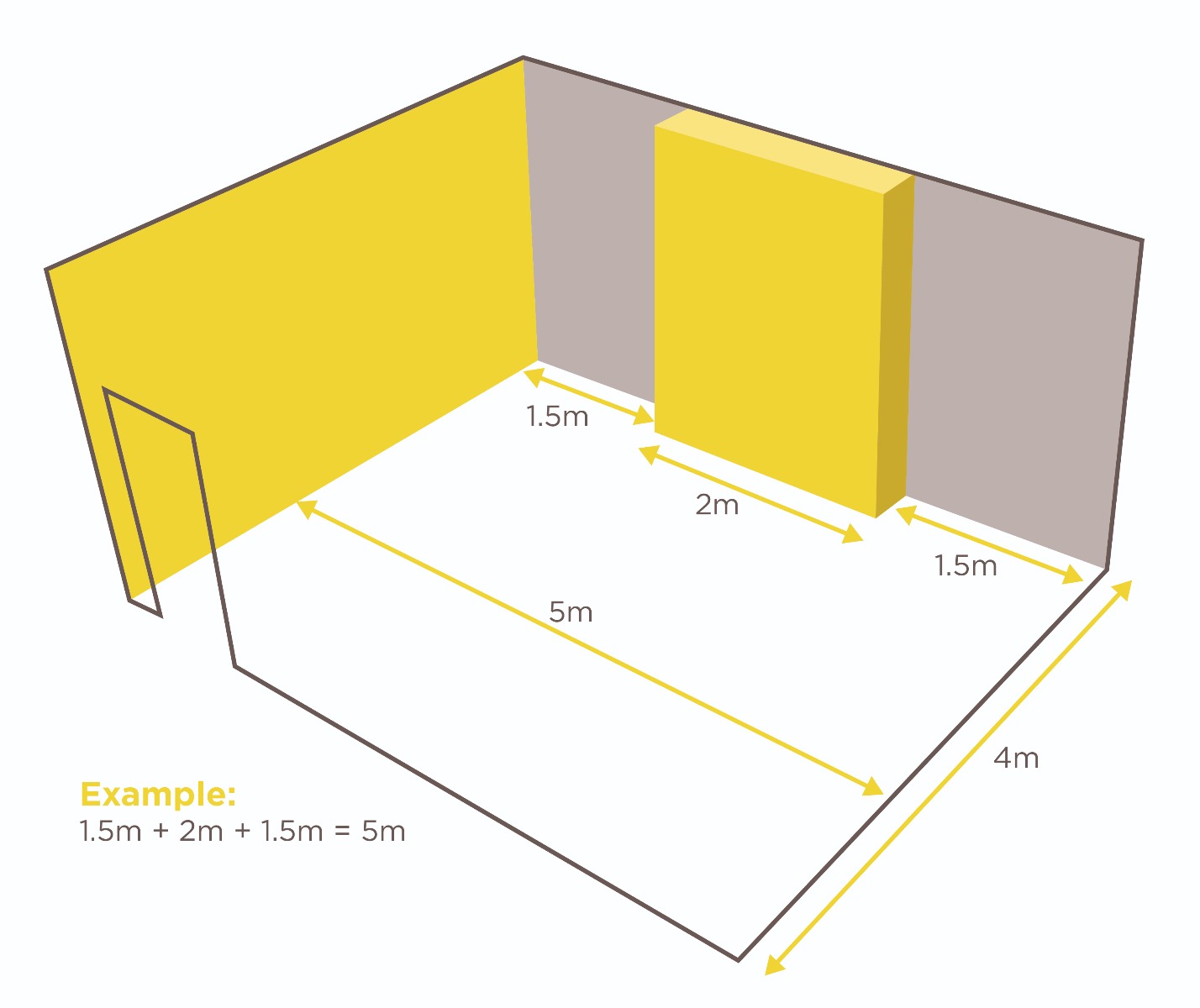
Indentations and recesses
Bay windows, fireplaces, wall supports, and other indentations or recesses can distort the shape of the room and flooring will need to be cut to fit around them.
Measure the length of the straight parts of the walls, then measure the length of the indentation or recess. Add them together for the total length.
For a round recess or curved end to a room you will need to calculate the surface area;
- Measure the length and width through the middle of the recess
- Divide the length in half and multiply that number by the width
- Calculate the total by 3.14 to give you the complete area of the circle and divide by 2
- Add to the other area totals for the room
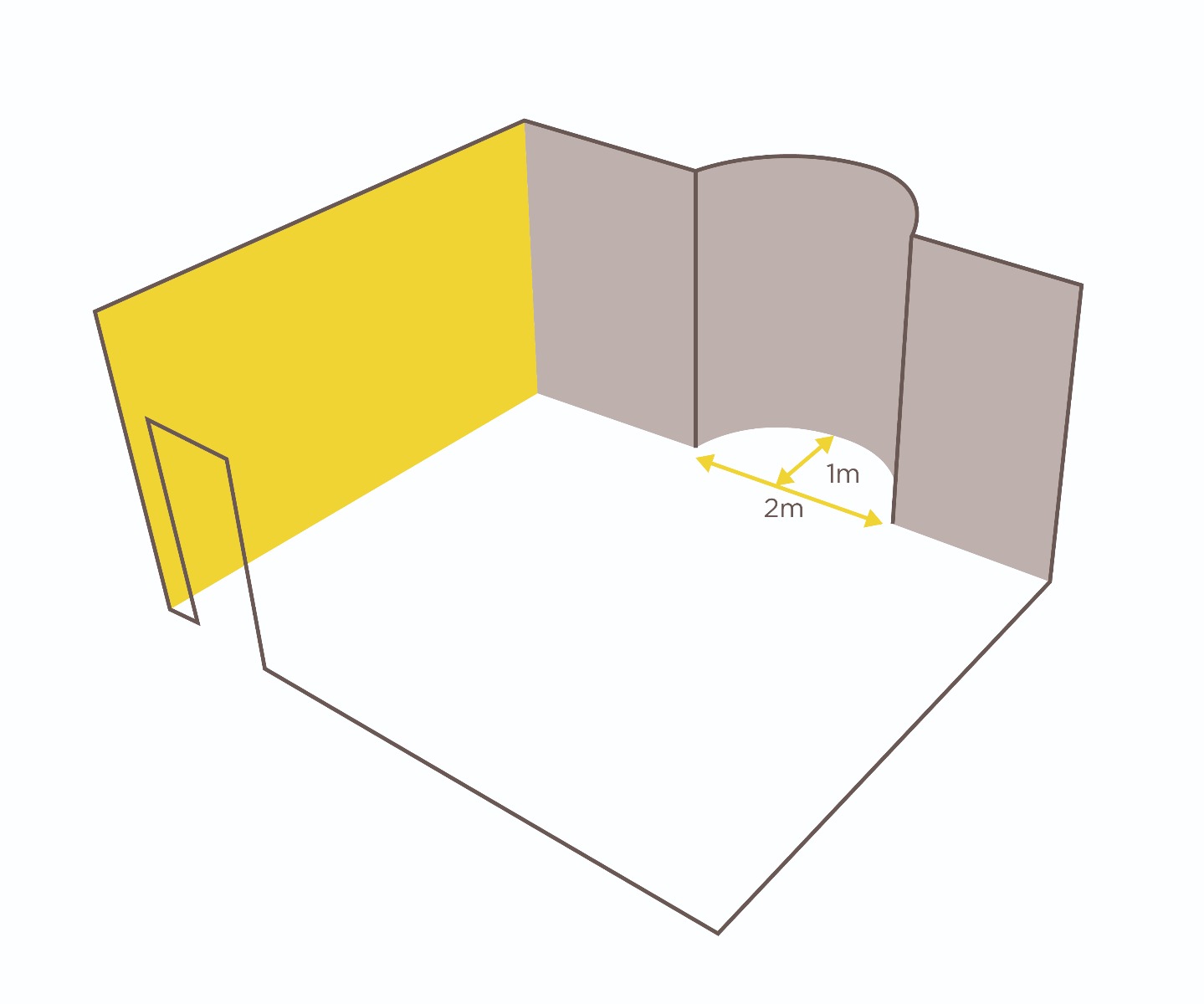
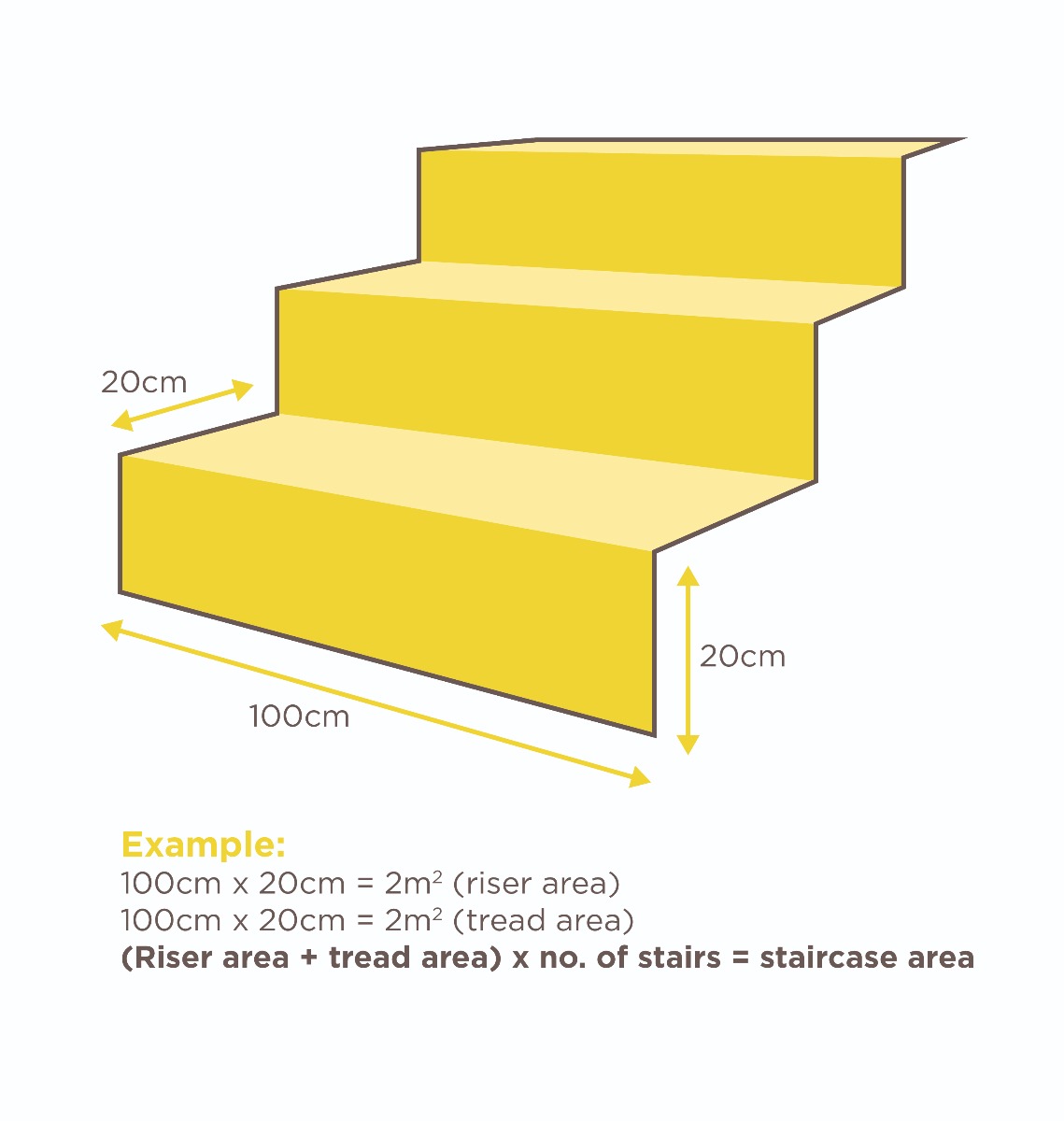
Staircases
For straight staircases where the size of the steps are identical;
- Measure the length and width of the tread – the top of the step – and multiply to get the area
- Measure the length & depth of the riser – the front of the step – and multiple to get the area
- Add together to get the area per step
- Multiply the area by step by the number of steps, excluding the top step which will be covered by the landing flooring
For winding staircases or those with uneven sizes of steps, measure the widest and longest parts of each stair.
Landings
Landings can be awkward shapes for measuring. The easiest way to do it is to split it down into a couple of different spaces.
Calculate the areas of each of these different sections and then add them together to find the total area.
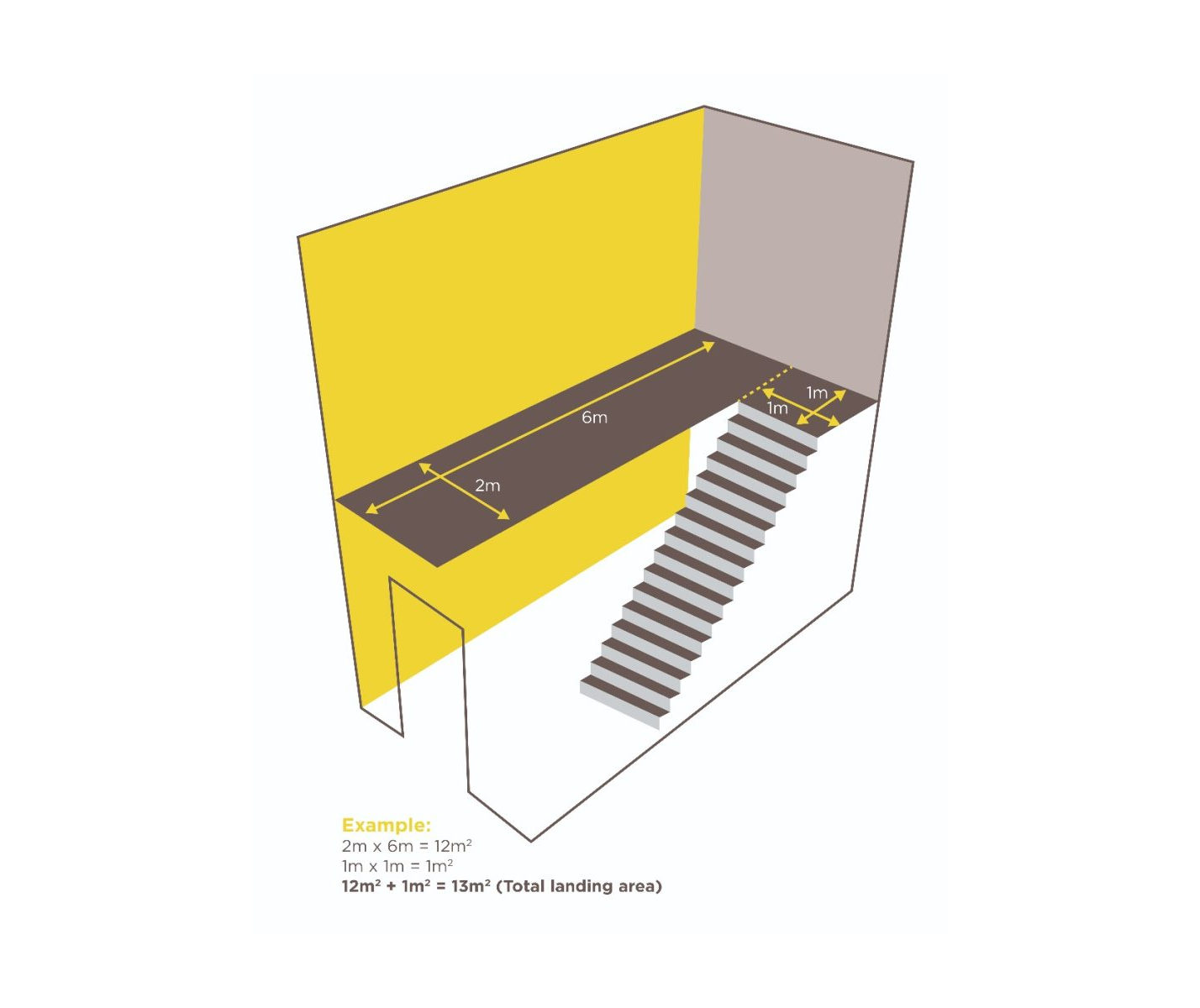
When you have your measurements, please visit us at our flooring outlet in Croydon, where we can help you find the best flooring for your project, from cheap carpet rolls to hardwearing waterproof click flooring.
Remember, if you need any support, bring your measurements and floor plan sketches with you to our showroom in Croydon and our team will do our best to help.
